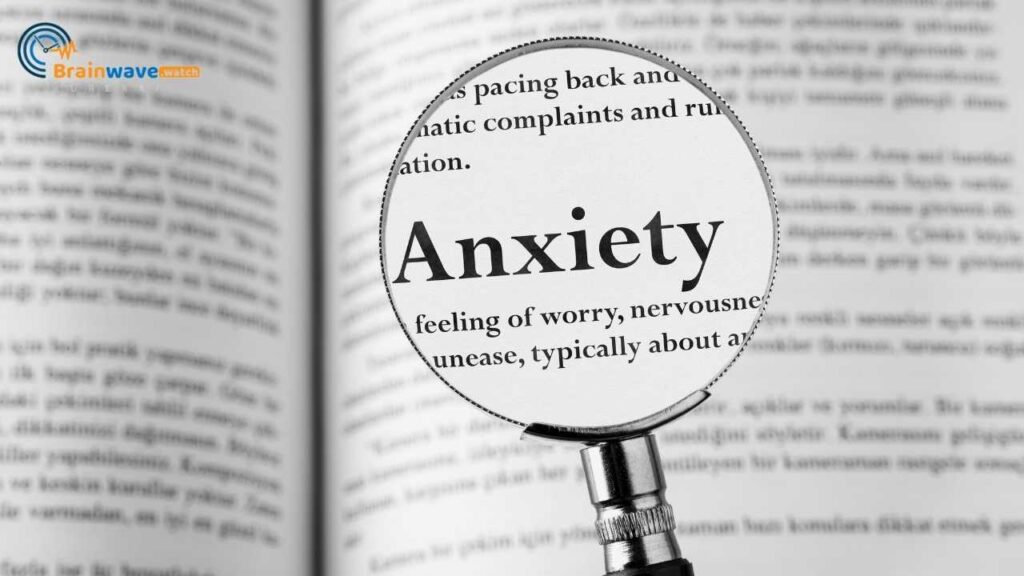Autism spectrum disorder (ASD) refers to a range of conditions characterized by challenges with social skills, repetitive behaviors, speech, and nonverbal communication. According to the CDC, signs of autism typically become apparent between 12 and 24 months of age. While autism affects each child differently, some common signs in infants and toddlers include:
-
Lack of eye contact – Children with autism often avoid eye contact or have trouble understanding the meaning behind facial expressions and gestures. They may seem unengaged when others try to interact with them.
-
Delayed speech – Many autistic children start talking later than their peers. Some may hum or babble instead of using words. Speech may develop slowly or seem abnormal, such as echoing what others say.
-
Repetitive behaviors – Repetitive motions like rocking, hand-flapping, spinning, or repeatedly playing with toys are common in autism. Some children obsessively line up toys or objects. They may follow unusual routines or rituals that can seem odd or unnecessary to others.
If your child exhibits any of these red flags, it’s important to have them evaluated by a pediatrician. Early diagnosis leads to earlier access to supportive services and therapies. But keep in mind that some behaviors like lack of eye contact or delayed speech can happen in normally developing children too. Evaluating the whole clinical picture is crucial before concluding a child has autism.
Why Do Autistic Children Exhibit Repetitive Behaviors?
Repetitive behaviors are very common in children with autism spectrum disorder (ASD). These behaviors are referred to as “stereotypies” or “stimming”, which stands for self-stimulatory behavior.
There are a few key reasons why autistic children engage in repetitive behaviors:
-
Self-stimulation – Many autistic children experience sensory differences, such as hypersensitivity or hyposensitivity to stimuli. Repetitive movements like hand flapping, spinning or rocking provide internal stimulation that can help regulate their senses. The repetition is calming and satisfying.
-
Comfort and coping – Repetitive behaviors can also serve as a comfort mechanism or a way to cope with stress, anxiety, or uncomfortable emotions. The predictability and rhythm of the behaviors create a sense of calm and control. Stimming gives autistic children a way to self-soothe when overwhelmed.
-
Communication – Some repetitive behaviors may function as a means of non-verbal communication. For example, hand flapping when excited or happy. The behaviors act as a signal to others about the child’s internal state.
-
Play-stimming behaviors are sometimes exhibited during play as well. Repetitive play like lining up toys in rows provides enjoyment for autistic children.
While the reasons behind repetitive behaviors vary, they generally serve an important function for autistic individuals. Understanding why autistic children stim is key to supporting their needs. The behaviors should not automatically be discouraged unless they pose a safety risk or prevent learning.
Examples of Repetitive Behaviors
Repetitive behaviors, also called stereotypic behaviors, are common in children with autism spectrum disorder (ASD). Some of the most frequent repetitive behaviors include:
-
Rocking – Rocking back and forth while sitting or standing is a self-soothing behavior. The rocking motion can provide comfort and relieve anxiety. Some children may rock subtly while others rock their whole bodies more vigorously. Rocking often increases during times of distress.
-
Hand flapping – Rapidly moving the hands back and forth is another common repetitive behavior. Hand flapping may occur when excited or anxious. Some experts think hand flapping provides sensory input. Like rocking, it can have a calming effect.
-
Spinning – Children may spin or turn themselves around repeatedly. Spinning provides vestibular stimulation and input. It can also serve as a way to cope with too many environmental stimuli. Some children may enjoy the feeling of dizziness that spinning causes.
-
Pacing – Walking back and forth without a clear purpose is referred to as pacing. It is often seen when a child is agitated, anxious, or overstimulated. The repetitive motion can be self-soothing. Pacing may occur along the same path or pattern. Some children may pace while making repetitive vocalizations.
Is Running Back and Forth a Repetitive Behavior?
Running back and forth can sometimes be a form of repetitive or self-stimulatory behavior in children with autism spectrum disorder. This type of repetitive movement is thought to provide sensory input that the child finds calming or pleasurable.
Some reasons an autistic child might engage in repetitive running include:
-
Seeking vestibular stimulation – the movement provides input to the inner ear which can have a calming effect.
-
Providing proprioceptive input – the impact of their feet on the floor gives sensory feedback.
-
Enjoying the feeling of motion. The repetitive movement may be soothing.
-
Releasing excess energy or anxiety. The rhythm of running can help the child regulate their emotions.
-
Stimming – short for self-stimulation, stimming refers to repetitive behaviors that provide sensory stimulation.
So in some cases, running back and forth can be a self-stimulatory behavior for children on the autism spectrum. However, it’s important to keep in mind that not all repetitive running is related to autism. There can be other causes as well, which will be covered later in this article.
When to Be Concerned About Repetitive Running
Repetitive running back and forth is not necessarily a cause for concern on its own. However, if the behavior persists over time and begins to interfere with a child’s daily functioning, it may be a sign of an underlying issue like autism. Here are some signs that repetitive running has become problematic:
-
The child spends an excessive amount of time running back and forth throughout the day, often to the exclusion of other activities.
-
Running interferes with the child’s ability to engage in school, social situations, or daily routines.
-
The child becomes distressed if they are unable to engage in the running behavior.
-
The child runs in inappropriate or unsafe settings like parking lots or stores.
-
Running back and forth prevents the child from learning new skills or gaining independence.
-
The behavior continues even after developing other interests or being redirected.
-
The running causes issues for the family and makes it difficult to participate in activities outside the home.
If your child’s repetitive running has persisted over weeks or months and is getting in the way of their development and participation, it’s a good idea to have them evaluated by a pediatrician or child psychologist. While not necessarily a definitive sign, excessive and persistent running can be an indicator of autism or other developmental conditions. Early intervention can help provide support and teach coping strategies.
How to Manage Repetitive Running
If your child exhibits repetitive running behaviors, there are some strategies you can try to help manage it:
-
Redirect to a more productive activity. Try gently redirecting your child to another activity when they start running back and forth repeatedly. Engage them in a preferred play activity, craft, or game to shift their focus. You can also set up obstacle courses or designate running spaces to direct the energy into constructive play.
-
Provide sensory tools. Repetitive movements often serve a sensory purpose for autistic kids. Providing toys and tools that offer sensory input can help meet their needs more healthily. Weighted vests, therapy balls, fidget toys, and chewy tubes are options to consider. Rotating through different tools can help prevent any one item from becoming another repetitive fixation.
-
Build in movement breaks. Schedule regular breaks to run, jump, dance, or play to meet your child’s sensory cravings for movement. Active playtime outdoors or inside on a rainy day can allow them to satisfy the urge to run in a contained manner.
-
Teach replacement behaviors. Use behavioral strategies like modeling and positive reinforcement to teach your child an alternate behavior to use instead of running when they feel the urge. Clenching their fists, taking deep breaths, jumping in place, or squeezing a stress ball can give them an outlet without running away.
-
Determine the trigger. Observe and take notes to detect patterns surrounding the running. Identifying triggers like transitions, boredom, excitement, stress, or sensory overload can reveal ways to proactively prevent or minimize repetitive running.
-
Consult your child’s treatment team. Therapists experienced with autism can provide additional strategies for managing repetitive behaviors. They can also evaluate whether the running serves a purpose that needs to be addressed.
Other Reasons Children Run Excessively
While repetitive running can be a sign of autism, there are other reasons children may run back and forth excessively:
High Energy Levels
Some children simply have a lot of energy and feel the need to burn it off. High energy levels in young children are common, especially in boys. Running around is one-way kids release pent-up energy. Children with high activity levels may benefit from scheduled vigorous play or sports.
Lack of Stimulation
Running can be a self-stimulatory behavior for children who are bored or understimulated. A child who is not getting enough mental and physical activity may start running as a way to create stimulation. Providing engaging activities, toys, and games can help prevent boredom.
Anxiety
Running back and forth may be a way for anxious children to release nervous energy. Stress, worries, or feeling overwhelmed can cause restlessness. Calming strategies like deep breathing, yoga, and mindfulness can help ease anxiety levels. If excessive running is linked to anxiety, counseling may be beneficial.
Seeking an Evaluation for Autism
If you are concerned your child may be on the autism spectrum, the first step is to talk to your pediatrician. Share your specific observations about your child’s development and behaviors that are causing you to be worried.
Your pediatrician can perform an initial screening and help determine if a more comprehensive evaluation for autism spectrum disorder (ASD) is needed. If so, they can provide a referral to a specialist such as a developmental pediatrician, child psychologist, or neuropsychologist.
It is important to seek an evaluation as early as possible if ASD is suspected. Children can be reliably diagnosed by age 2, and early intervention can greatly improve outcomes.
Many states provide early intervention services for children under 3 years old at no cost through the Early Intervention program. These services are tailored to the child’s needs and may include speech therapy, occupational therapy, behavioral therapy, and more. Early intervention can help children with ASD make significant gains in communication, social skills, behavior, and cognitive development.
The earlier autism is identified and treated, the better the prognosis for the child’s development. Don’t hesitate to raise your concerns with your pediatrician and pursue an evaluation if recommended. With the right support, children with autism can thrive.







